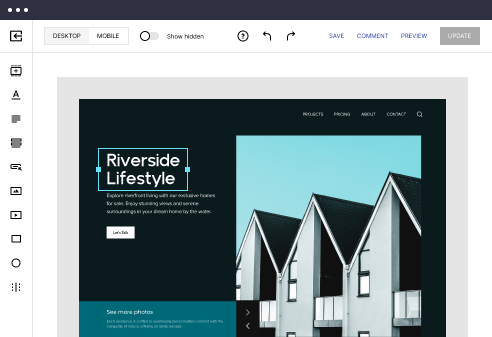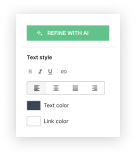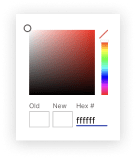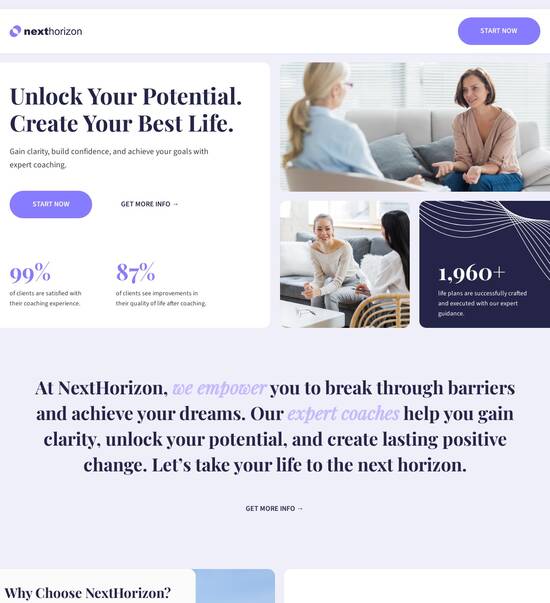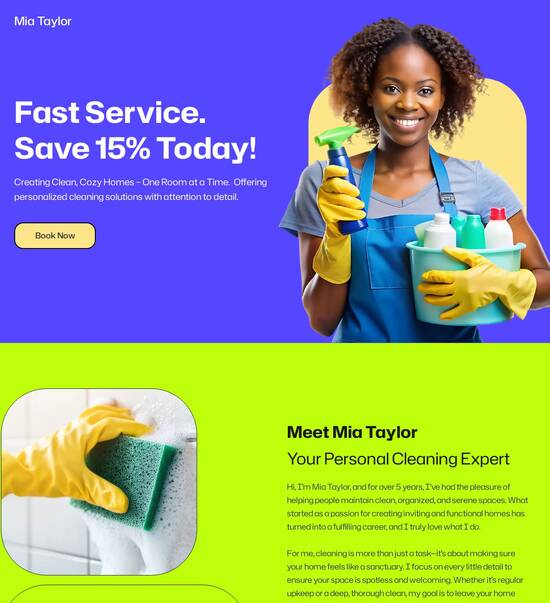
HTML/CSS optimized integrations page template
Explore Similar TemplatesAbout template
Supercharge your integrations page with HTML/CSS for outstanding performance! Learn more today.
Recommended templates
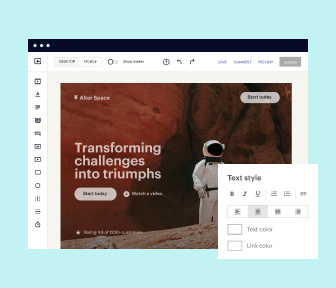
Easy to build without coding
With the intuitive drag-and-drop builder, anyone on your team can create high-converting pages without any knowledge of code or design. Make enhancements to your landing page with custom widgets using Javascript, HTML/CSS, or third-party scripts.
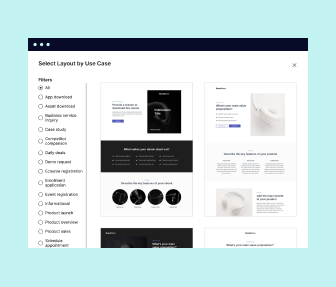
Multiple layouts for any industry and goal
Select from 500+ landing page layouts built to boost conversions across industry-specific scenarios. Customize them by adjusting fonts, adding images, and generating on-brand content with the AI assistant. Quickly scale with Instablocks® and Global Blocks that you can save, reuse, and update globally.
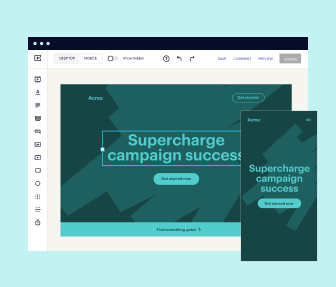
Loads fast and looks polished on any device
Every template is responsive, which means they present professionally on any device and load blazingly fast with our Thor Render Engine. You can also power them up with Google AMP technology to deliver an unparalleled mobile experience and drive higher conversions.
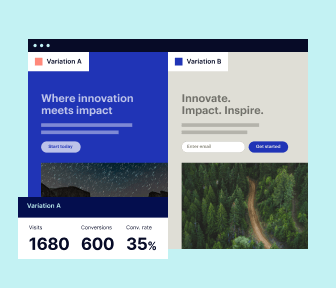
Robust analytics & experimentation
Get real-time updates and reporting across all your devices, showing the number of visitors, conversions, cost-per-visitor, and cost-per-lead. Launch AI-powered experiments, run A/B tests, and use heatmaps to analyze user behavior, then optimize your landing page to maximize conversions.

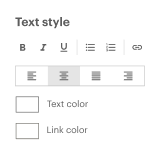
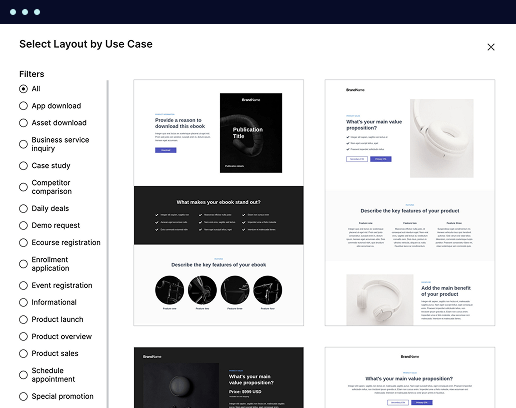
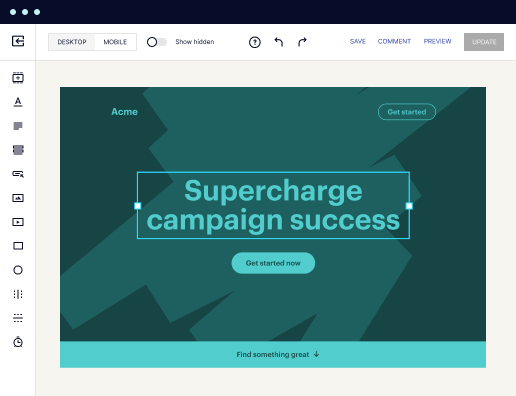
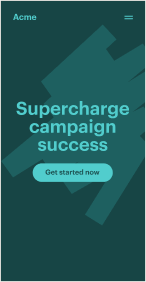
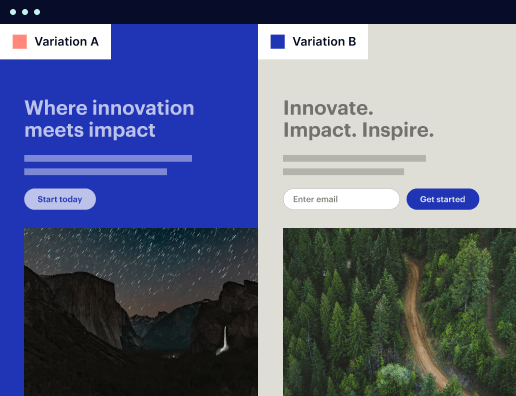

Easy to build without coding
With the intuitive drag-and-drop builder, anyone on your team can create high-converting pages without any knowledge of code or design. Make enhancements to your landing page with custom widgets using Javascript, HTML/CSS, or third-party scripts.
Multiple layouts for any industry and goal
Select from 500+ landing page layouts built to boost conversions across industry-specific scenarios. Customize them by adjusting fonts, adding images, and generating on-brand content with the AI assistant. Quickly scale with Instablocks® and Global Blocks that you can save, reuse, and update globally.
Loads fast and looks polished on any device
Every template is responsive, which means they present professionally on any device and load blazingly fast with our Thor Render Engine.
Robust analytics & experimentation
Get real-time updates and reporting across all your devices, showing the number of visitors, conversions, cost-per-visitor, and cost-per-lead. Launch AI-powered experiments, run A/B tests, and use heatmaps to analyze user behavior, then optimize your landing page to maximize conversions.
All the features you need to build lead-generating landing pages
Explore more featuresLearn how to build top-performing landing pages for any goal
FAQs
Leading the way in building high-performing landing pages





Create high-converting landing pages with Instapage's powerful platform
In the competitive landscape of digital marketing, creating effective landing pages is crucial for maximizing ROI. Instapage stands out as a robust landing page and conversion rate optimization (CRO) platform designed to help marketers accelerate, optimize, and scale their campaigns effortlessly. By offering a variety of customizable templates and a suite of tools, Instapage simplifies the landing page creation process, enabling teams of all sizes to achieve remarkable results.
Getting started with Instapage
To begin leveraging Instapage for your campaigns, follow these steps to create your first landing page. The user-friendly interface and intuitive design ensure that you can launch your page without needing extensive technical expertise.
- Choose a template: Select from over 100 high-converting templates tailored to various industries and objectives. This allows for a quick start while maintaining a professional appearance.
- Customize your design: Use Instablocks to drag and drop elements, ensuring your landing page aligns with your brand’s visual identity. Personalization options help to create a unique user experience.
- Publish and share: Once your design is complete, Instapage allows you to publish in just a few clicks, making it easy to share your page through various marketing channels.
Optimizing for conversions
After your landing page is live, optimizing it for higher conversions should be your next focus. Instapage provides various built-in tools for effective experimentation and analysis.
- A/B testing: Utilize Instapage’s A/B testing capabilities to compare different versions of your landing page and determine which elements drive the best performance.
- Heatmaps: Analyze heatmaps to visualize user behavior on your page, allowing you to make informed adjustments based on how visitors interact with your content.
- Analytics dashboard: Monitor key performance indicators on the dashboard, giving you insights into traffic sources, conversion rates, and overall engagement.
Personalization strategies
Creating personalized experiences is essential for engaging diverse audience segments. Instapage offers various features to tailor content effectively.
- Dynamic text replacement: Automatically adjust text based on the referring source or ad campaign, ensuring visitors feel connected to the content.
- AdMaps: Align specific ads with unique landing pages to provide a seamless experience that nurtures leads toward conversion.
- Audience metrics: Track performance at the audience level, identifying trends and preferences that help refine your approach.
In conclusion, Instapage is an all-in-one platform that simplifies the process of creating and optimizing landing pages. By utilizing its powerful features, marketers can craft high-performing pages that significantly enhance their digital marketing efforts.
Ready to transform your marketing campaigns? Explore Instapage today and unlock the full potential of your landing pages.
People also ask about HTML/CSS optimized integrations page template
Harnessing the Power of an HTML/CSS Optimized Integrations Page Template
Understanding the core components
In modern web design, HTML (Hypertext Markup Language) and CSS (Cascading Style Sheets) serve as two principal pillars for creating effective and engaging web pages. HTML is responsible for structuring the content, ensuring that text, images, videos, and interactive elements are logically arranged for any user browsing the page. This structure is essential not only for user interaction but also for search engine optimization. CSS complements HTML by controlling the aesthetics and responsive design elements of the web page. It allows web developers to implement visually appealing layouts and ensures that the site looks great across various devices and screen sizes.
An optimized integrations page template is key to promoting a product or service effectively. Integrations pages typically showcase how your offerings connect to other tools, enhancing user engagement. They play a critical role in digital marketing strategies, particularly for SaaS websites, where collaboration with other applications can greatly affect conversion rates. By using a well-designed integrations page, businesses can communicate their compatibility with other services, thereby attracting more users and potentially increasing revenue.
Structure and design: The backbone of user experience
The layout of an optimized integrations page template comprises several structural elements that make navigation simple and intuitive for users. Key components typically include a header, footer, navigation menu, and content sections. The header often includes the logo and primary navigation links, while the footer can provide additional links and contact information. Clear division of content sections helps users digest information quickly, making it easier for them to understand the integrations and their benefits. A clean design is crucial; clutter can overwhelm users, leading to higher bounce rates.
Customizable CSS design elements add versatility to the integrations page. Typography encompasses font choices that ensure balance between readability and brand identity. Moreover, a consistent color scheme strengthens your brand image and makes the integrations page visually cohesive. Incorporating responsive design guarantees that users will have a seamless experience, whether they visit from a desktop, tablet, or smartphone. The ability to adapt to various screens and resolutions enhances user satisfaction, promoting prolonged engagement with the page.
Header: Contains logo and main navigation.
Footer: Includes links to important information.
Content sections: Clearly divide information for easy reading.
Intuitive navigation is integral to enhancing user experience. Effective menu structures organize content logically, significantly reducing bounce rates. Implementing sticky navigation—a menu that remains visible as the user scrolls—ensures key links are always accessible. This structure smooths the browsing experience, allowing users to focus on finding the information they need without unnecessary clicks.
Integrating content dynamically
Content is a main driver of engagement on any integrations page. Well-written, compelling text can significantly improve visibility both on search engines and within your target audience. Concise yet informative copywriting is essential; it provides users with all necessary details without overwhelming them. An engaging tone that speaks directly to potential customers fosters a connection and increases the likelihood of conversion.
Artificial intelligence (AI) is a groundbreaking tool for enhancing content recommendations dynamically. By analyzing user behavior and preferences, AI can personalize the content shown to each visitor, ensuring they're engaging with relevant information. Real-time content optimization techniques enable businesses to refine their offerings on the fly, increasing the chances of meeting diverse user needs effectively.
Maximizing functionality with strategic integrations
To create a highly functional HTML/CSS integrations page, certain features are essential. First, interactive forms enable lead generation by collecting user contact information. These forms can be designed to match the website aesthetics while facilitating user communication. Furthermore, effective social media linking offers seamless connectivity to platforms where users spend significant time, enhancing brand visibility and engagement.
Tailoring the user experience for different visitors is essential. New users may require an introductory walkthrough of integrations, while returning users may benefit from advanced features. Testing different functionalities helps gather insights into user preferences, allowing for A/B testing of features for optimal engagement and retention rates.
Optimization across devices and browsers
Adopting mobile-first design principles is crucial since an increasing number of users access websites via mobile devices. Mobile optimization is non-negotiable; a responsive design ensures users enjoy seamless experiences regardless of the device they use. Techniques such as flexible grids, fluid images, and media queries help achieve a mobile-friendly layout. These elements dynamically adjust, ensuring the design is functional across devices and not confined to a specific resolution.
Ensuring cross-browser compatibility is another critical factor to consider. Common pitfalls include displaying issues, functionality discrepancies, and performance inconsistencies. Regularly updating your integrations page and testing across different browsers help identify issues early and allows for quick adjustments, ensuring a seamless experience for all users.
Leveraging landing pages for increased visibility
Crafting landing pages that convert requires a blend of essential elements. Key aspects include a strong call to action, persuasive text, and eye-catching aesthetics. Employing analytics enables marketers to refine page performance continually. Analyzing metrics such as bounce rate, time on page, and user interaction for each element provides insights to adjust strategies effectively.
Implementing SEO best practices is vital for enhancing discoverability. On-page SEO involves structuring content appropriately for search engines, making it easier for potential customers to find you. Among important components to focus on are meta tags, alt text for images, and properly structured headings. Leveraging these tools effectively can significantly improve organic search rankings and is a crucial component of any landing page strategy.
Real-world applications and case studies
Examining successful integrations pages provides valuable insights for marketers. High-performing integrations pages typically showcase clear visuals alongside concise descriptions, making it easy for users to grasp integrating tools’ benefits quickly. Brands like Zapier have developed integrations pages that allow users to see the interconnectedness of various applications, driving engagement and conversion through simplicity and clarity.
User testimonials and feedback also play an essential role in refining template design. Analyzing user experiences gives wealth information that informs updates and optimizations. Adoption of user-centered design practices throughout the development process ensures the final product meets real user needs and preferences, thus enhancing overall satisfaction.
Future trends in HTML/CSS integrations template designs
Emerging technologies are significantly reshaping web design, including HTML/CSS integrations templates. AI and machine learning can assist in creating user experiences that are tailored to individual preferences and behaviors. Predictive analytics give insights into potential user journeys, enabling marketers to present customized experiences that cater directly to user needs.
Anticipating user needs and shifts in the industry is also essential. Understanding evolving user behaviors and preferences allows businesses to stay ahead of the curve, adapting websites to meet new demands. Proactive forecasting of trends in integration template designs is necessary, especially within a frequently changing digital marketing landscape.
Crafting your own optimized integrations template
Creating an optimized integrations page template involves a systematic approach. Start with a clear plan of your structural layout, ensuring key components are included, such as the header, footer, and main content areas. Coding from scratch allows for a high degree of customization, but utilizing frameworks and libraries can expedite the process and enhance functionality. Popular libraries like Bootstrap and Tailwind CSS guarantee responsive designs and speed up development cycles.
Maintaining and updating your template is equally crucial. Best practices for optimization include embracing a regular review schedule where content, design, and functionality are assessed. Keeping up with web standards ensures that the template remains relevant and user-friendly, aligning with both user expectations and industry developments.
Appendix
To effectively build and test your HTML/CSS integrations page, consider tools and platforms designed for this purpose. Platforms like GitHub, CodePen, and tools for SEO analysis can provide significant support. Additionally, maintaining a checklist for SEO optimization and integration functionality helps ensure that all critical elements are continuously monitored and improved.
Understanding the terminology used in web design and integrations is also crucial. A glossary of key terms will aid in ensuring that all team members are on the same page, promoting efficient collaboration and facilitating better design outcomes.
Ready to skyrocket conversions?
Supercharge your ad campaigns with high-performing landing pages
Get started